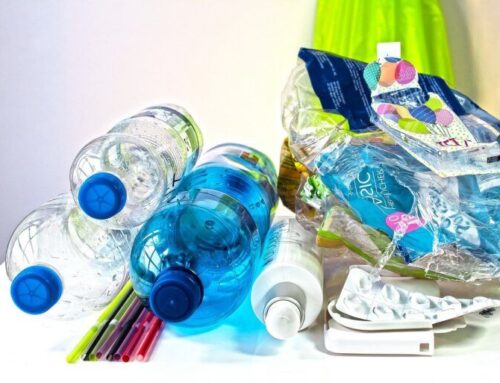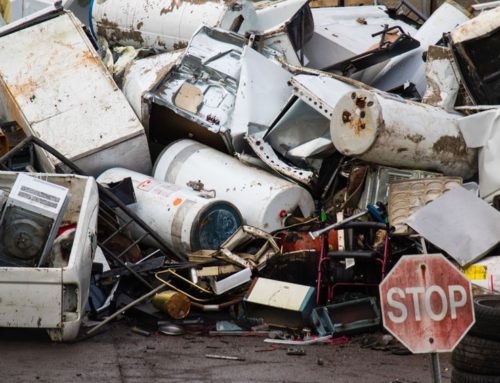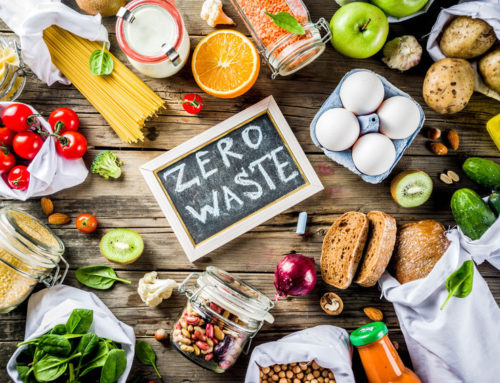The average American generates a lot of garbage! In studies done by the Enviromental Protection Agency, it is estimated that Americans throw out over 1,600 lbs per individual each year. Multiply that out by the number of people living in the United States, and the amount of garbage is staggering.
Reducing garbage and recycling more are hot topics that are challenging the packaging and consumer goods industries as people are demanding better solutions that are environmentally friendly. You may be looking for ways to reduce your garbage output, but find the whole concept intimidating. Who can really stuff a month’s worth of garbage into a mason jar? Below are some realistic solutions for minimizing the garbage at your home:
-
Reuse Your Supplies
One of the easiest ways you can reduce the amount of garbage you end up tossing away is by reusing your household packaging supplies. Think zippered sandwich bags, plastic wrap, paper bags, etc. Instead of throwing these items out, clean them and use them over and over again. When they finally do wear out, you can replace your supplies with more earth-friendly options.
While it is best to avoid plastics all together, it may not always be practical to do so. If you purchase plastic tubs of sour cream, yogurt, or other foods, clean out the tubs and use them as food storage containers. All you may need to do is write the food contents with a marker on the outside of the container.
-
Bring Your Own Supplies
Bringing your own supplies to work, restaurants, coffee shops, and stores is the perfect way to keep more trash from making its way to your home. Carry your lunch in a reusable sack and make sure your food containers and silverware are also able to be cleaned and reused. You can find portable straws, silverware, and plates that are designed for traveling at most retail stores.
Grocery store products are perhaps the biggest producers of waste there is. Before heading out to the grocery store, make sure to grab your reusable shopping bags, produce bags, jars, bottles, and containers so you can fill these items and not create more trash for yourself. Many grocery stores now have bulk sections for this purpose. If your grocery store does not have a bulk section, try to purchase foods that come with the least amount of packaging possible and items that are only packaged in cardboard, glass, and metal containers in an effort to reduce plastic waste.
-
Make Your Soaps, Beauty Supplies, and Cleaners
Again, reduce the amount of packaging you bring into your home substantially by making your own homemade soaps and cleaners. Body washes, surface sprays, and body creams are often packaged in large thick plastic containers and these containers can’t always be recycled. If you need help making your own products, head over to You Tube or Pintrest to find inspiration. You can also look for local bulk shampoo, lotion, cleaners, and soap at some eco-friendly grocery stores.
-
Compost Food Scraps
Cut down on your garbage even more by composting your food scraps instead of throwing them away. Compost is an excellent soil amendment that will add organic matter and nutrients to your plants. To make compost, collect food scraps like fruits and vegetables and layer them with dry ingredients like leaves and grass clippings inside a composting container. After approximately six months, you will have a rich compost to add to your garden soil. Food like dairy products and meat should never be composted as it creates a horrible smell when decomposing. Used coffee grounds and crushed up eggshells can also be added directly to your garden to boost the nutrient levels.
-
Be a Smart Shopper
Being a smart shopper is more than just purchasing products in bulk and in eco-friendly packaging. It is about using resources wisely and being conscious of where your products come from. Being a smart shopper includes purchasing items that are made from recycled materials so no new raw materials have to be removed from the earth. Thrift shopping is an ideal way to shop as you get to reuse clothes, books, jewelry, accessories, home decor, and housewares that others no longer want and no new products have to be manufactured as a result.
-
Get Off Mailing Lists
Even though we live in the age of digital technology, you may notice that your physical street mailbox still gets jammed up with weekly ads, political flyers, pre-approved credit offers, and an assortment of catalogs from stores you have shopped at in the past. Many people walk straight from the mailbox to the recycle container to discard all of this unwanted mail without even giving it a second thought. Instead of encouraging the wasteful use of paper to continue, contact the businesses sending you the junk mail and request that they stop sending it to you.
-
Eat Real Food
Eating real food is the way to better overall health and reducing the waste you throw away. Think vegetables, fruits, nuts, butcher cut meat and other natural foods. You can reduce your food waste to almost nothing if you are savvy about where you purchase your foods. When you purchase meat at the grocery store, it is usually packed in plastic wrap on foam trays. If you purchase your meat from a local butcher, they will typically wrap your meat in a sheet of plastic and paper wrap. The plastic sheet can be washed and reused. Try to purchase eggs, cheese, and produce from local farms to reduce packaging waste even further. Avoid processed foods that are filled with unhealthy ingredients and are typically packaged in flashy boxes and bags.
-
Drink More Water, But Not the Bottled Kind
Water is pure, clean, and delicious, and is good for keeping you hydrated all day long. Stop buying bottled water, juices, coffee drinks, energy drinks, and soda, and make an effort to consume more water. You will save a lot of money and calories in the long run. Most tap water straight from your kitchen sink is perfectly safe to drink. If you are leary about drinking your tap water, you can purchase an inexpensive water filtration system to clean it before drinking it.
-
Cloth Diapers and Feminine Products
Believe it or not, there was a time not so long ago when disposable diapers and feminine products were not yet invented and therefore, it was customary to use cloth products to collect personal waste. Disposable products are typically made with synthetic materials, including plastics that are harsh on skin and often lead to rashes. Cloth products are much easier on sensitive skin and can be used over and over again while just being laundered in between uses. To clean cloth diapers and feminine products, simply rinse them off in the toilet to remove any solids and put them in the washer and dryer like you would any other clothes. Purchasing cloth diapers and feminine products can save you hundreds of dollars each year.
-
Get Crafty!
Have some old and worn out clothes, colorful scrap paper, or products packaging you don’t want to throw away? It is time to get crafty and re-purpose all of these materials instead of throwing them into the garbage. Old clothes can easily be turned into pillows and quilts, glass bottles into vases and storage containers, plastic containers into planter pots, and the list goes on. Get closer to your zero-waste goal and have fun in the process. Complete internet research to find inspiration!
Reducing waste at home is something that anyone can do and it is easy to get the whole family involved. Whether your goal is to do it hard-core and become a zero-waste home or if you are just looking for simple ways to cut down, you can use some or all of these tips to reduce the amount of garbage you set out to the curb each week for pickup.






Leave A Comment